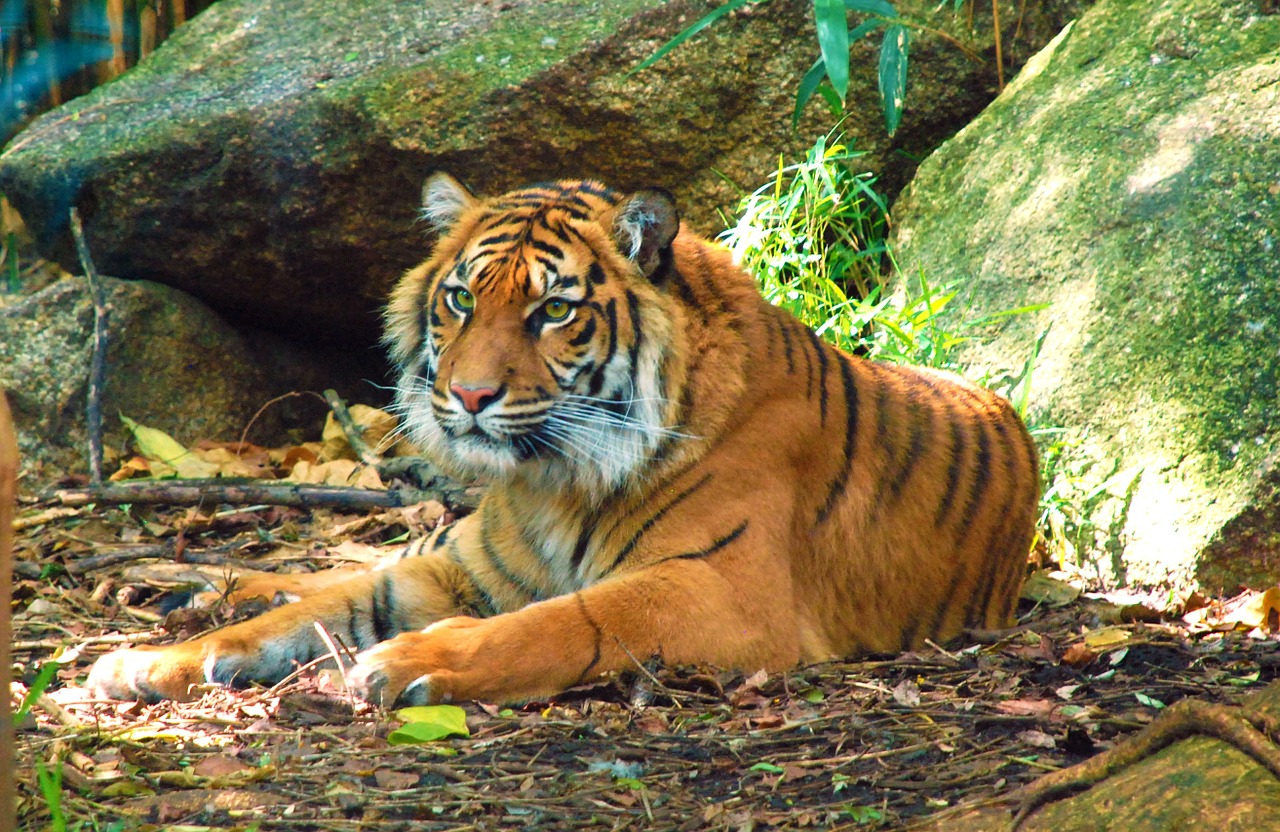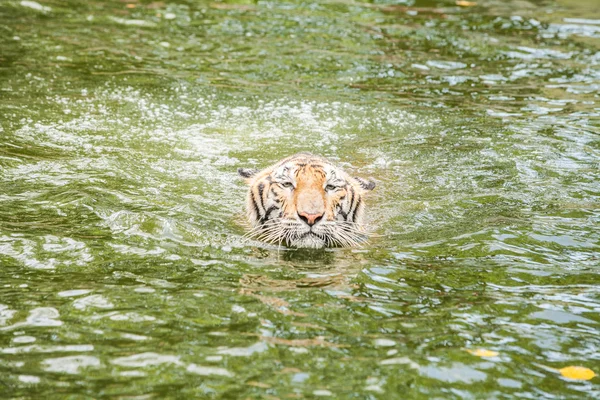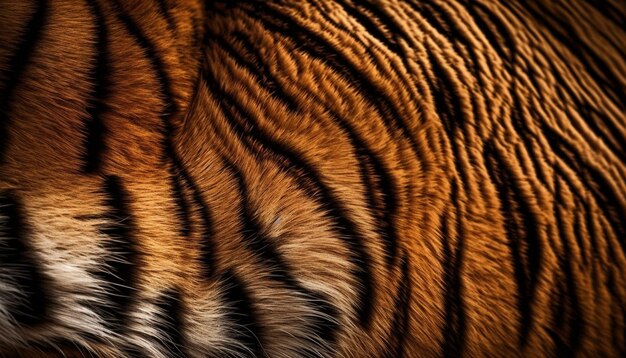Tigers can be seen as huge cats because of their stripes; however, they are on a path to extinction. The Red List of the IUCN acknowledges a total of six different subspecies of tigers, three of which are considered to be in extremely endangered status.
1 Although they are most often found in tropical Asia, in the past they had a far wider range that included Central Asia, Western Asia, and Turkey.
In the Russian Far East, there is still a small population of the Amur tiger subspecies in one particular region.
The appearance of this cat in everything from mythology to cereal packaging demonstrates how long it has captivated human imagination. In spite of the enormous presence they have, there is still more to learn about these cats.
Table of Contents
10. There is a dangerous lack of tigers.

Loss of habitat and illegal hunting are the primary dangers that tigers face today.
They engage in direct competition with people for the big ungulates, such as deer and wild pigs, which are essential to their diet.
The natural habitat of tigers is being reduced in size due to human activities such as the harvesting of tropical hardwoods, the cultivation of oil palms and other crops, and the construction of homes.
Unfortunately, highways may be found in 43% of tiger breeding regions and 57% of tiger conservation landscapes, both of which have an adverse effect on tigers by lowering the number of animals that they can prey on. 5 As there are fewer prey available, tigers are turning their attention to domestic farm animals, which has led to revenge murders.
Tigers, sometimes known as “walking gold,” are frequently killed for their skins, bones, flesh, and other body parts, which are then sold on the black market.
https://www.usatoday.com/story/news/2023/04/12/how-many-tigers-left-world/11600984002/
9. There are very few white tigers left in the wild.

White tigers are not albinos, and they did not become white so that they could better endure the snow where they lived. Their yellow and red pigment-producing genes are rendered inactive as a consequence of a genetic mutation, giving rise to their characteristic white fur.
Because this mutation is recessive, both of the child’s parents need to have the gene for it to be expressed in the child. An extremely pale tiger was observed in 2017, despite the fact that the last wild white tiger was killed in 1958.
4 captive white tigers that have been inbred have developed a variety of health difficulties as a result, including troubles with their hips, clubbed feet, and crossed eyes.
8. Their howls have the capability to stun their prey.

At the point where they enter the airway, the vocal folds are in the shape of a triangle in humans and in other species as well. Because of the presence of fat inside the structure’s ligaments, tigers and lions both have vocal folds that are square in shape. These large cats are able to produce a louder roar while exerting less strain on their lungs because of their square form. The decibel level of these low-frequency roars is equivalent to that produced by a lawnmower 25 times over. The very low frequencies, which are not audible to humans due to their extreme pitch, are the most significant aspect of their vocalizations. These infrasound frequencies include the potential to render prey animals, including people, unable to move or respond in any way. 3 They save their roar for the moment when their prey chooses to put up a fight, which is not very often while they are hunting.
7. Changing to the Subspecies That Are Being Listed

In general, contemporary tigers are divided into six different surviving subspecies as well as three that have since been extinct. Under this classification, the Sumatran, Siberian, Bengal, Indochinese, South China, and Malayan tigers are considered to be living subspecies of the species.
There are just two recognized subspecies of the tiger, Panthera Tigris and Panthera Tigris spondaic, according to the scientific classifications used in contemporary taxonomy. The first category contains all of the tigers that can be found on the mainland, while the second category only includes those that can be found on the Sunda Islands.
https://www.facebook.com/ConserveWildCats/videos/tigers-communicate-with-a-variety-of-vocalisations-they-hiss-chuff-and-roar-and-/836017906921799/
6. They Are Not Afraid of Water in Any Way

Tigers are an exception to the rule that most felines have a strong dislike for water; yet, this trait is common among felines. Tigers like playing in the water, swimming in it, and even sitting in it to get some relief from the heat of the day.
They often swim across rivers that are five miles wide despite having webbed toes, which greatly improves their ability to swim.
5. They hunt alone or in small groups.

Tigers, in contrast to lions, are solitary animals who hunt throughout the night by themselves. The eyesight of a hunting tiger is about six times more acute than the night vision of a person.
Their back legs are far longer than their front legs, which enables them to achieve a maximum running speed of 40 miles per hour and a vertical jump of over 33 feet. In spite of all of these adaptations for hunting, a tiger is only successful in one out of every ten of its hunts.
4. Just like fingerprints, no two of their coats are alike.

The pattern of stripes on a tiger is one-of-a-kind for each individual animal. As a consequence of this, identifying and following tigers for the goal of conservation may be accomplished through the use of visual inspections.
In spite of the fact that each and every stripe is distinct, they all work toward the same purpose, which is to disperse the outline of the tiger and make it more difficult for potential prey to find them before they pounce.
3. The pattern of their skin also includes stripes.

Even after the fur has been removed, the tiger’s skin retains its distinctive striped pattern. The same may be said about snow leopards, with their characteristic markings.
The reason for this is most likely due to the fact that the pigmented hair follicles that are imbedded in the cats’ skin are visible, much like stubble on a beard.
This sort of pigmentation is not seen on the skin of other animals that have stripes or spots on their bodies. For instance, zebras have black skin beneath their coats that is striped with black and white.
2. They have the capability to thrive in a wide range of environments.
Tigers may be found in a wide variety of habitats, ranging from mountainous regions to tropical woods.
They inhabit environments that are perpetually warm and humid, as well as regions where the temperature may drop to -40 degrees. Tigers are able to adjust to their environments so long as they are provided with sufficient food, shelter, and water.
The most significant challenge is finding sufficient food sources, since tigers consume between 50 and 60 large prey animals annually. T
hey will ingest food that is smaller than themselves, such as birds, but in order to properly breed, they need to consume prey that is about the same size as themselves.
1. The First Discovery of Tigers Comes from the Pleistocene Period
The Longden tiger (Panthera Zdarsky), which is the earliest known progenitor of the tiger species, lived between 2.15 million and 2.55 million years ago.
2 Gansu Province in China was the location where the bones of this tiger were discovered. Researchers claim that the anatomy of the skull and teeth of this species was remarkably similar to that of the modern tiger, despite the fact that it was far smaller.
Researchers have a hunch that tigers have grown larger as their prey has become bigger.
Conclusion
Tigers are the most diversified species of cat on the globe and are known for their royal demeanor and gorgeous appearance. Even though tigers are remarkable creatures, you shouldn’t go too close to one unless there’s a sturdy barrier between the two of you, such as a fence.
Tigers may be quite dangerous. As a result of the common habit of grouping tigers in with all of the other large cats found around the globe, many people have incorrect assumptions about tigers.
We are aware that tigers are in risk of extinction as a direct result of the irresponsible actions of people, and there is a great deal of intriguing things about tigers that you may not be aware of.
Top 10 Lists of the people, things, places, most expensive, animals, most popular, luxury and high rankings of world. World's Top Insider focuses on the top ten lists of best, greatest and top rankings in the world.


